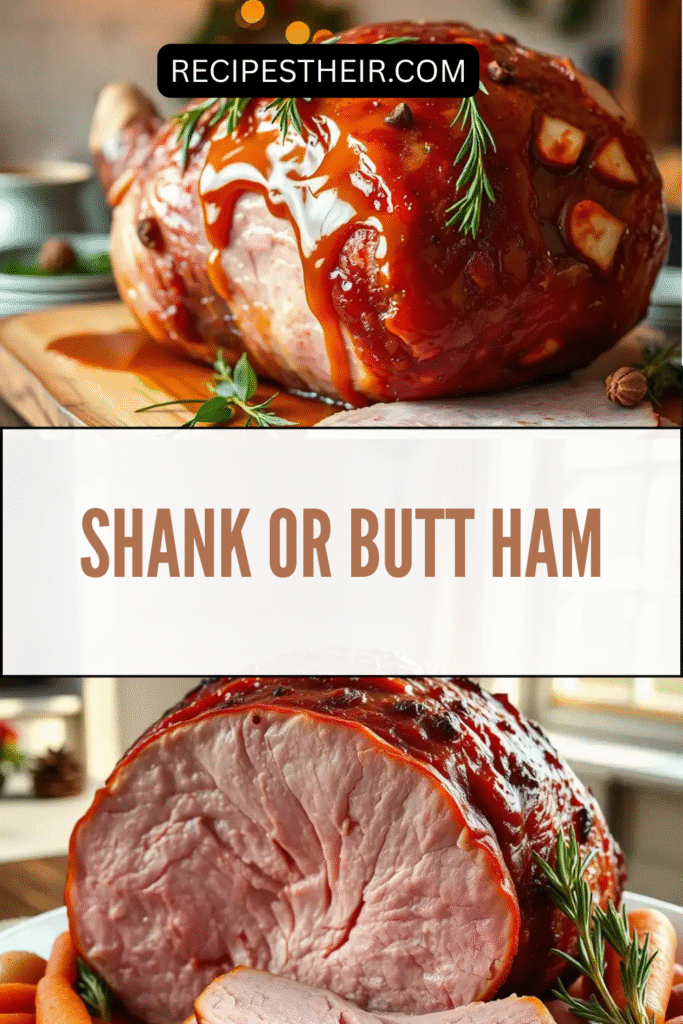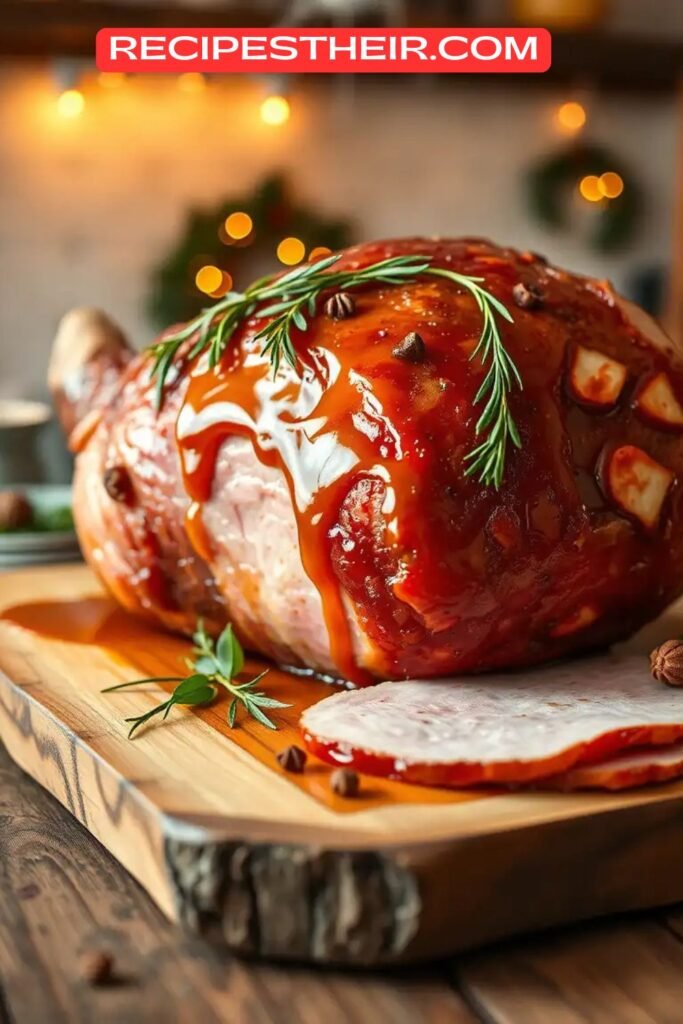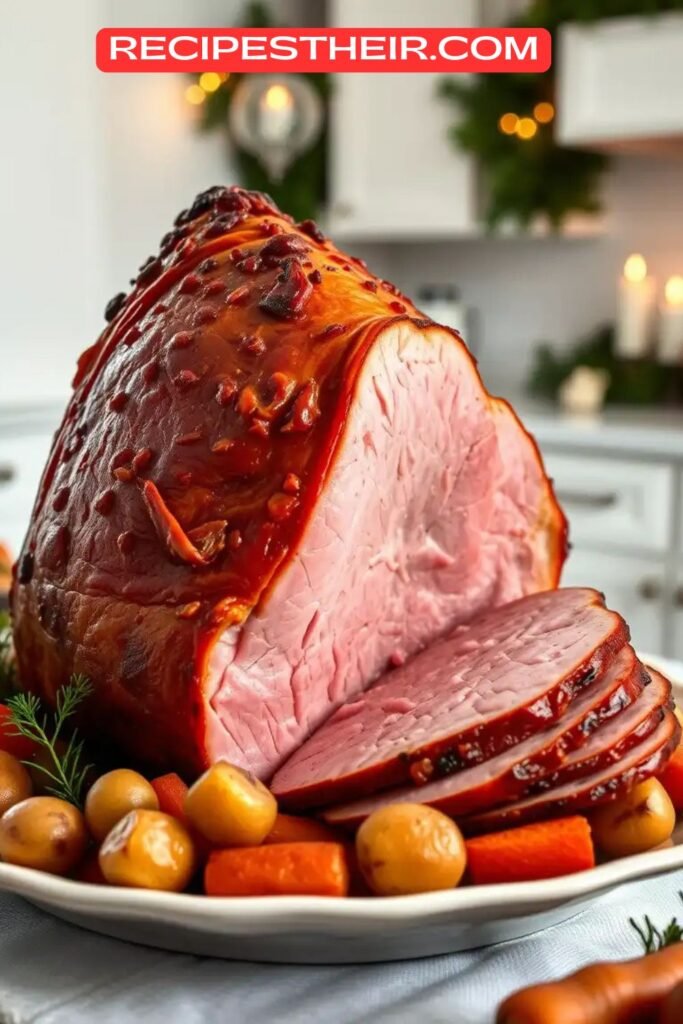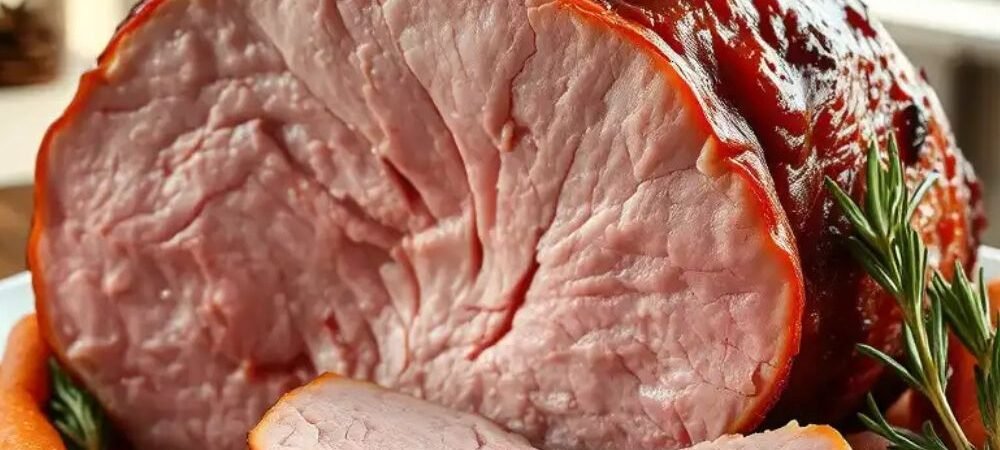When it comes to holiday feasts or Sunday dinners, nothing quite matches the savory, juicy perfection of a baked ham. But if you’ve ever stood at the meat counter debating between a shank or butt ham, you’re not alone. These two popular ham cuts both have their perks, but which one is right for your table? In this guide, we’ll break down the difference between shank and butt ham, how to cook each one to perfection, and some irresistible recipes that will have your guests asking for seconds.

What’s the Difference Between Shank and Butt Ham?
Before diving into recipes, let’s get clear on what separates a shank ham from a butt ham.
Shank Ham

The shank portion comes from the lower part of the leg. It has a classic ham appearance with a tapered shape and is easier to carve due to its single large bone. Shank hams typically have more fat, which keeps them moist during cooking and gives them a rich, traditional flavor.
Pros of Shank Ham:
- Easier to carve around one bone
- Classic presentation
- Juicy and flavorful due to higher fat content
Butt Ham

The butt portion (also known as the sirloin end) comes from the upper part of the leg. It contains more muscle and has a slightly irregular shape with a few more bones, which can make carving a bit trickier. However, it usually has more meat overall.
Pros of Butt Ham:
- Meatier cut with more servings
- Rich flavor
- Great for slicing for sandwiches or leftovers
Bottom line: If you’re serving a crowd and want easy carving, go with the shank ham. If you want more meat and don’t mind a bit more work, the butt ham might be your winner.
How to Cook Shank or Butt Ham (Baked to Perfection)
Regardless of the cut, cooking a ham at home is easier than you might think. Here’s a simple guide to get that holiday-perfect result every time.
Ingredients:
- 1 fully cooked shank or butt ham (7 to 10 lbs)
- 1 cup brown sugar
- ½ cup Dijon or yellow mustard
- ¼ cup apple cider vinegar or orange juice
- Whole cloves (optional)
Instructions:
Step 1: Preheat and Prep
Preheat your oven to 325°F. Remove the ham from its packaging and place it flat side down in a large roasting pan. Score the fat in a criss-cross diamond pattern if you’d like to add a decorative touch and help the glaze soak in.
Step 2: Add Flavor
Stud the ham with whole cloves for a classic look and extra flavor, if desired. These can be pushed into the center of each diamond cut.
Step 3: Bake Covered
Add ½ cup of water or juice to the bottom of the pan to keep things moist. Cover the ham with foil and bake for about 15 minutes per pound.
Step 4: Glaze Time
In a small bowl, whisk together the brown sugar, mustard, and vinegar (or juice). During the final 30 minutes of cooking, remove the foil, brush the glaze over the ham, and return it to the oven uncovered to allow the glaze to caramelize.
Step 5: Rest and Serve
Once your ham reaches an internal temperature of 140°F, remove it from the oven. Let it rest for 15-20 minutes before carving to let the juices redistribute.
Easy Glaze Variations for Shank or Butt Ham

Want to take your ham up a notch? Here are a few tried-and-true glaze ideas:
1. Honey Mustard Glaze
- ½ cup honey
- ¼ cup grainy mustard
- 1 tbsp apple cider vinegar
2. Pineapple Brown Sugar Glaze
- ½ cup brown sugar
- ½ cup pineapple juice
- 1 tbsp Dijon mustard
3. Maple Bourbon Glaze
- ½ cup maple syrup
- 2 tbsp bourbon
- 1 tbsp whole grain mustard
Just mix the ingredients and brush onto your ham during the final 20–30 minutes of baking.
Serving Ideas for Shank or Butt Ham
Your deliciously baked ham deserves some tasty sidekicks. Here are some favorite pairings:
- Scalloped Potatoes or Mashed Potatoes
- Green Bean Almondine
- Roasted Carrots and Parsnips
- Deviled Eggs
- Dinner Rolls or Cornbread
And don’t forget to save the ham bone—perfect for soups and stews like classic split pea soup!
Leftover Ham Recipe Ideas
Whether you picked the shank or butt ham, you’re bound to have some tasty leftovers. Here are a few creative ways to use them:
1. Ham and Cheese Breakfast Casserole
Layer cubed ham with eggs, cheese, and bread cubes for an easy make-ahead breakfast bake.
2. Ham and Potato Soup
Creamy, hearty, and comforting—this soup uses leftover ham and potatoes for a warm hug in a bowl.
3. Ham Fried Rice
A quick stir-fry with rice, veggies, scrambled eggs, and diced ham. Great for a weeknight dinner.
4. Ham and Swiss Sliders
Mini Hawaiian rolls filled with ham, Swiss cheese, and a buttery mustard glaze. Perfect for game day.
FAQs About Shank or Butt Ham
Is shank or butt ham better?
It depends on your needs! Shank ham is easier to carve and juicier, while butt ham is meatier and more flavorful.
Do you need to cook a shank or butt ham?
Most supermarket hams are pre-cooked or smoked, which means you’re just heating them to 140°F. Always check the label.
Should I buy bone-in or boneless?
Bone-in hams (such as shank or butt) have a better flavor and texture, and the bone can be used in soups. Boneless hams are easier to slice but can be slightly less juicy.
How much ham per person?
Plan for ¾ to 1 pound per person for bone-in hams. For a 10-person gathering, aim for an 8–10 lb ham.
Final Thoughts: Shank or Butt Ham—You Can’t Go Wrong
Choosing between shank or butt ham comes down to preference. Both cuts deliver incredible flavor and can be the star of your table with just a bit of love in the kitchen. Whether you’re hosting Easter brunch, a holiday dinner, or just craving a hearty homemade meal, a beautifully glazed ham—shank or butt—won’t disappoint.
So go ahead, pick your cut, glaze it up, and get ready to impress your guests with a classic comfort food centerpiece that never goes out of style.
